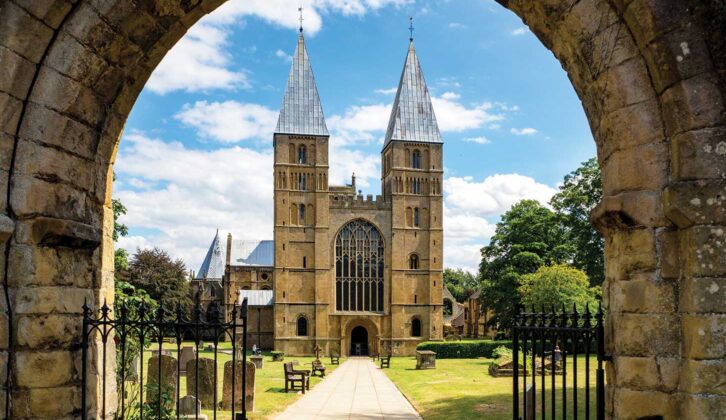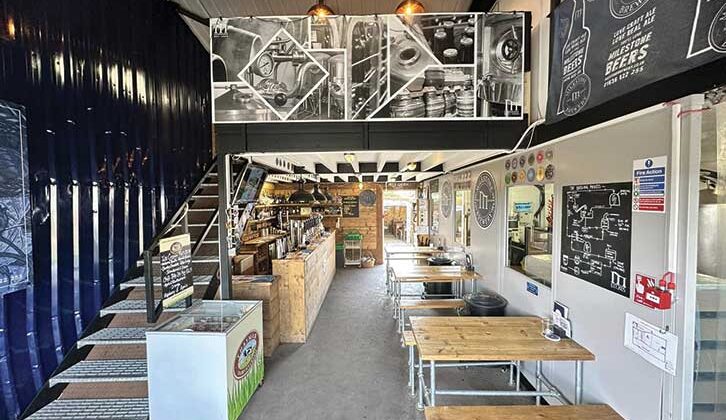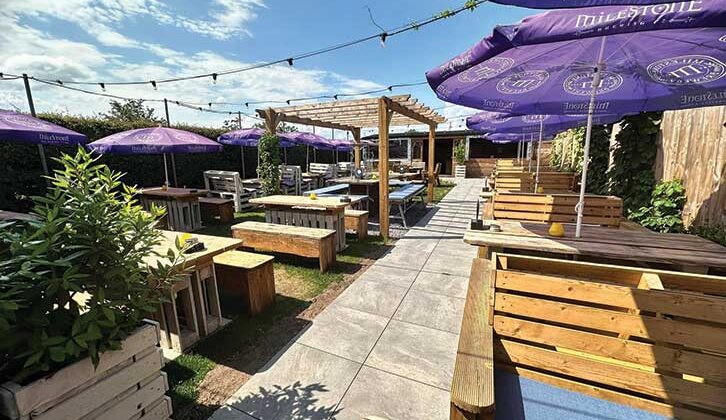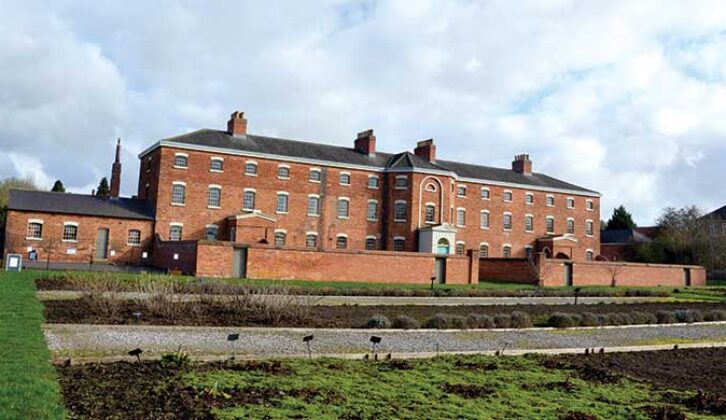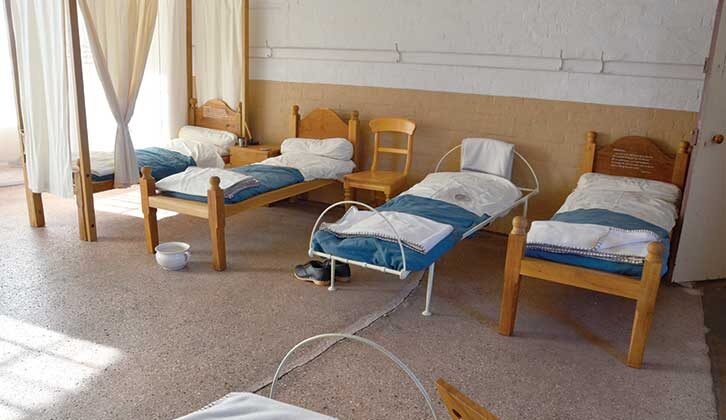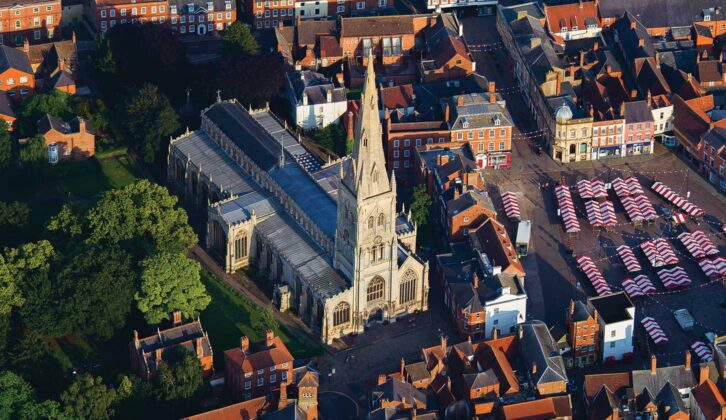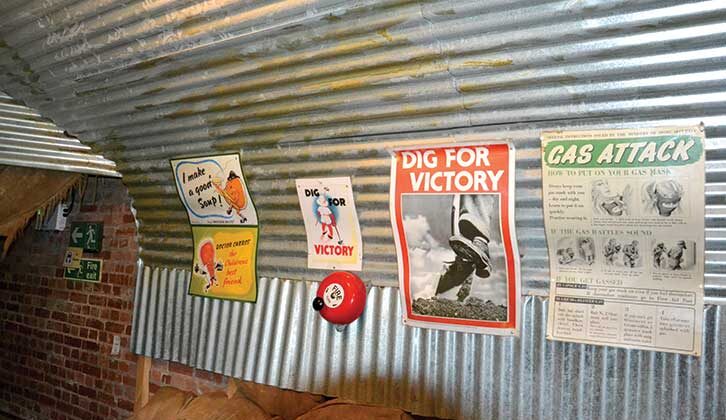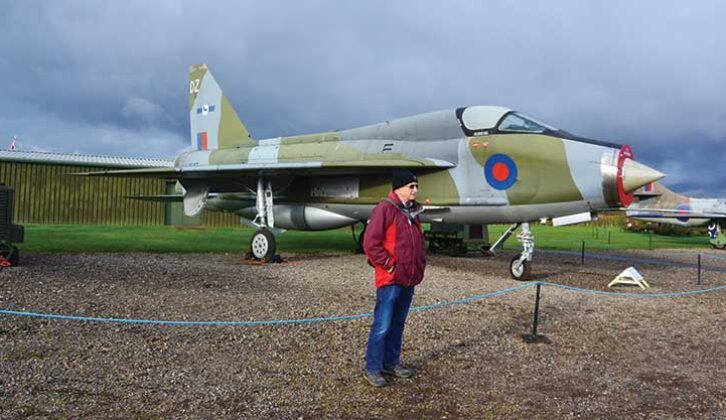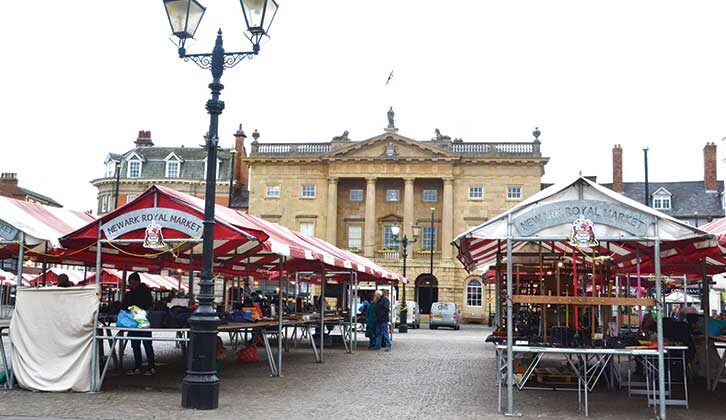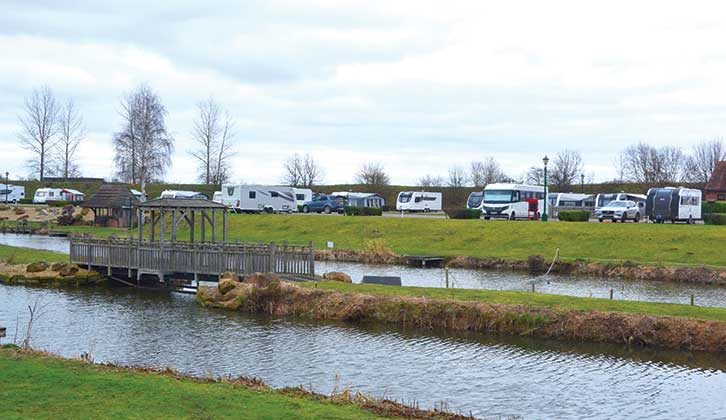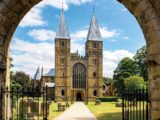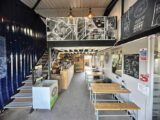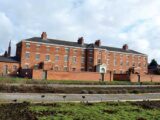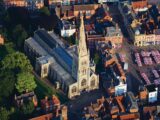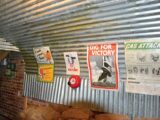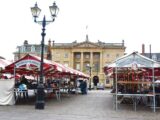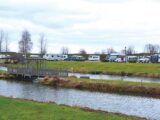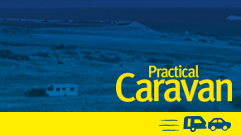Joe and I love to discover the unusual, the quirky and odd facts about the places we visit. So when we arrived at Milestone Caravan Park, just north of Newark, in Nottinghamshire, we were wondering what the local area would offer us.
The site lies on the old Great North Road, at the edge of the charming village of Cromwell, now bypassed by the mighty A1. Cromwell is known as a Thankful Village, because everybody who served in the First World War returned home.
We were greeted warmly at reception and assigned a pitch. After setting up and eating a late lunch, we took a stroll around the caravan site with fishing, discovering it’s larger than we expected.
For some, the best caravan sites will offer beautiful views, and that’s the case here, with some pitches overlooking two lakes.
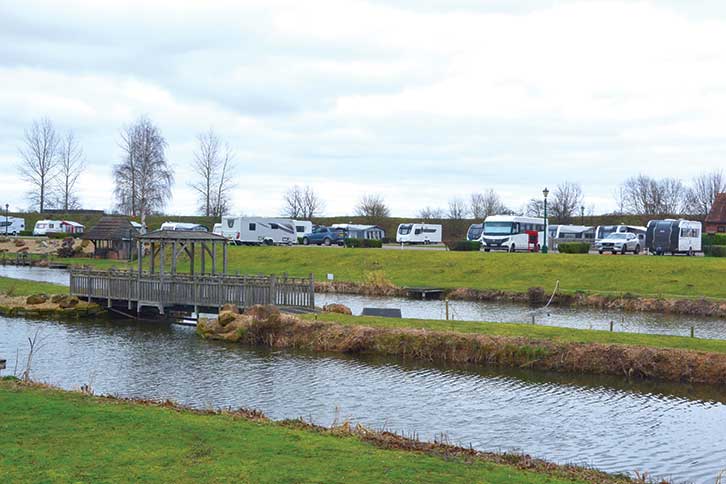
Next day, we explored the village and discovered that Cromwell, under the name ‘Crunwelle’ (from the Old English ‘Crumb’ and ‘Wella’, meaning crooked stream) has a long history – for example, it was recorded in the 11th-century Domesday Book.
The houses in the village are built from a beautiful rose-coloured brick, and these days, new builds still have to comply.
Needing refreshment, we were pleased to find that next door to the dog friendly caravan park, the Milestone Brewery – run by a husband and wife team – was serving craft beers as well as wines and spirits in the tap room.
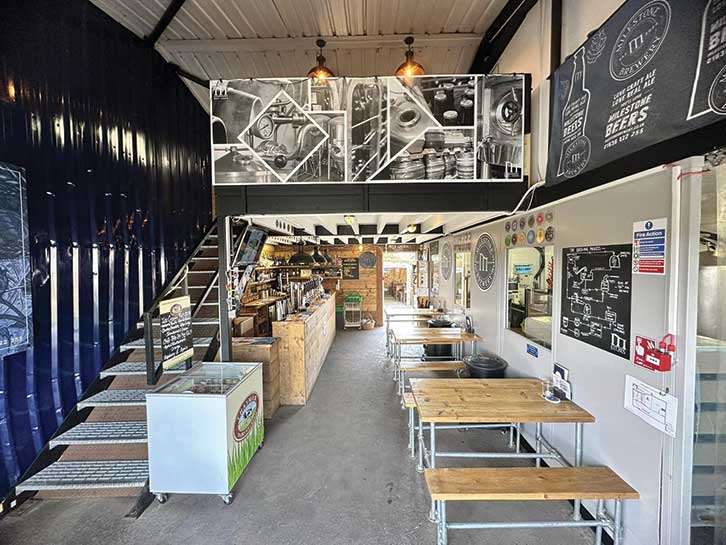
Food vendors arrive at the site on several nights, offering pizzas, fish and chips and Asian dishes – there’s a blackboard outside reception providing details.
Ancient meets modern
Strolling around the village, we came across the Grade I listed St Giles’ Church, nestling in a garden with drifts of snowdrops. It was built in the 13th century, although the tower was added later. Cromwell is compact, and soon we were at the southern end, where there is a BP garage on the A1, accessible from the village. It sells snacks, newspapers and milk (there are no other shops).
In the afternoon, armed with a map from reception, we set off to walk to Cromwell Lock, a large navigation lock on the Trent, with a weir next to it.
It was here, at a memorial by the lock, that we learned of the 10 members of the 131 Independent Parachute Squadron, Royal Engineers (Volunteers) who lost their lives in 1975, after a power failure cut the lights on the weir and their boat went over.
Beside the memorial is a stone marking the site of a former Roman bridge. In 1882, workers involved in improving navigation on the River Trent found remains of what they thought was a Roman bridge, although archaeologists now believe that its origins were eighth-century Mercian. Our first day and we’d already learned a lot, without even leaving the environs of Cromwell!
Next day, we were heading further afield, south-west of Newark to visit the imposing Southwell Workhouse, acquired by the National Trust in 1997.
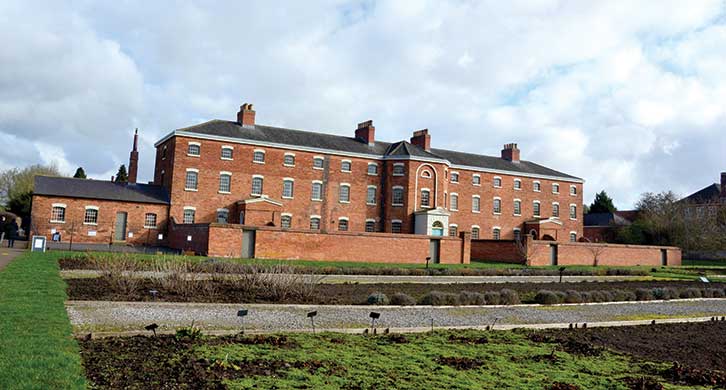
The archetypal image of workhouse life is famously described in Charles Dickens’s Oliver Twist. The guides at Southwell aimed to provide an alternative view, but this was clearly a place of last resort for the poor.
Our guide informed us that the Reverend John Becher, a clergyman, magistrate and social reformer, built the workhouse, which was opened in 1824.
Regarded as the best preserved workhouse in England, it has seven chimneys on each side of the entrance, yet there were very few fireplaces – the external appearance was all for symmetry and show.
Workhouse life
Men sent to the workhouse were allocated the left-hand side of the building and if fit enough, put to work tending the vegetable patch or breaking up stones.
The women lived in the right-hand side and were allowed to keep their children with them. Women did the housekeeping, sewing and mending clothes.
Everybody was provided with warm clothing and three meals a day, and their children were taught in the schoolroom – it was said they were better educated than those outside the workhouse.
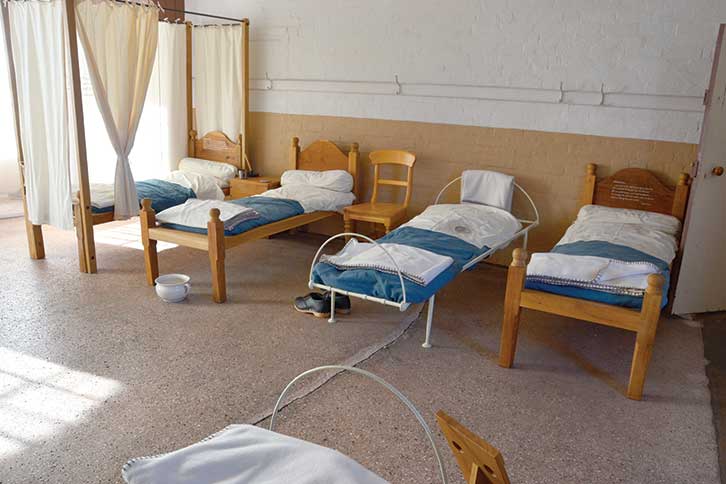
We toured the building, seeing the rather spartan sleeping accommodation and the schoolroom, the rooms where the women worked and a separate exercise yard for both men and women.
When we visited, it was a bitterly cold day, outdoors and in, at this very austere institution. We were grateful to stop for a lunch of pepper and tomato soup with crusty bread at the café in the Infirmary, a separate building by the workhouse.
The Infirmary cared for the sick who were poor, but not necessarily from the workhouse, and luckily for the patients, was influenced by Florence Nightingale’s pioneering strategies, offering uncrowded conditions, better hygiene and trained nurses instead of inmate carers.
Southwell Minster
Having spent more time than planned at the workhouse, we delayed our exploration of the charming market town of Southwell until the following day.
The first thing that we discovered about Southwell is that there are two ways to pronounce its name. One is ‘south’, as in the compass point, and ‘well’ as in where you get water. The other is ‘Suthell’.
The most dominant feature here is the Minster – we had already spotted its towers as we were driving there.
The earliest place of worship on the site was founded in 627 by Paulinus, the first Archbishop of York. The Norman building work began in 1108 and was completed in 1150. There are many outstanding features in this splendid church, of which the best can be found in the Chapter House.
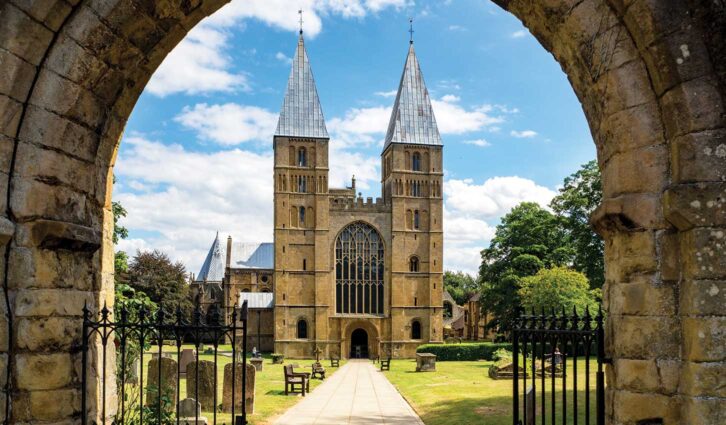
Known as the Leaves of Southwell, these exquisite carvings of plants, animals and Green Men date from the 13th century.
We were fascinated by the detail in the stonework, all the more obvious because they have been beautifully restored.
Another intricately carved stone screen, the 12th-century pulpitum, separates the Quire from the Nave. The brass lectern in the Quire was thrown into a lake to avoid confiscation during the dissolution of the monasteries. More than 250 years later, it was retrieved and gifted to the Minster.
We spent all morning at the Minster, there is so much to see, and eventually, looking for lunch, stopped for fish and chips at the Refectory in the grounds.
But there was more to explore – next door to the Minster is the Archbishop’s Palace. It dates from the 14th century and was partly ruined during the Civil War.
We strolled through the Palace grounds to see it more closely, then returned to the intact part containing the Great Hall. This imposing room has a fine vaulted ceiling, and portraits of the great and the good hang on the walls. It is said Charles I was arrested here in the Civil War.
One last fascinating fact from Southwell: it was here that the Bramley cooking apple was first marketed, in 1856.
The following day was wet, so I searched online for somewhere to visit indoors and found Newark Air Museum. Joe had worked in the aircraft industry early in his career, so this was the perfect destination.
The museum is located on the former World War II airfield of RAF Winthorpe, with two large hangars and some smaller buildings housing aviation artifacts, a café and an interesting gift shop.
Aviation history
It was very impressive, and boasts of being one of the largest volunteer-run aviation museums in the UK. You can see airplanes, helicopters, aero-engines and more.
There are aircraft outdoors to explore and luckily, the rain held off long enough to take a great photo of Joe standing next to the type of aircraft that he worked on – the English Electric Lightning.
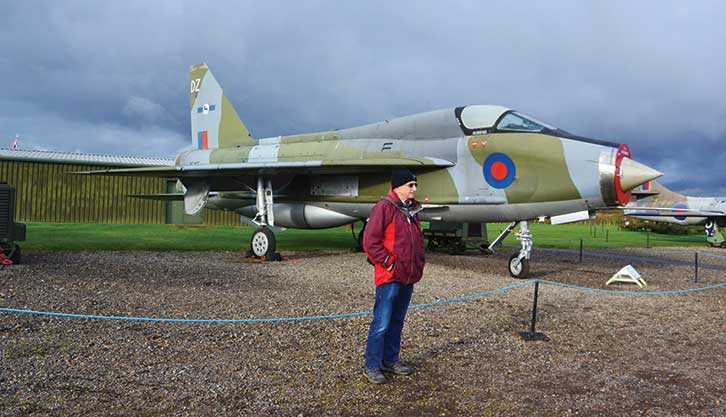
I was intrigued by a prototype monoplane designed by John Taylor in 1956 and built in his lounge, which restricted its size to 16ft! It was completed at a cost of £100 in 1959 and took its maiden flight in July that year. Now that’s the sort of quirky fact we like.
Exploring the caves
Until now, we had stayed relatively close to our base in Cromwell, but on finding an unusual attraction in Nottingham, we drove there, using the park and ride.
The bus dropped us off at the Victoria Shopping Centre and then we walked to the City of Caves.
Nottingham is built on a sandstone ridge from which some 800 caves were carved. Public houses used them for their cellars, and people lived and worked in other caves. There was a tannery here, and during World War II, Anderson shelters were built to protect people from air raids. But the caves date back much further – pottery fragments from 1270 to 1300 have also been found.
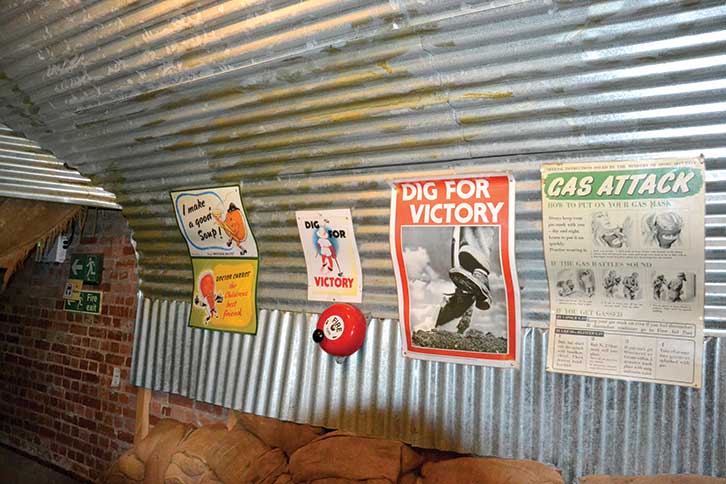
We just missed the guided tour, but we scanned a barcode with our phones near the ticket office at the entrance to the caves, to start our individual tour. It only covers a very small part of the caves, but we voted it a great visit.
Lunch at Ye Olde Trip to Jerusalem Inn
Feeling peckish by this time, we lunched at a Nottingham landmark, Ye Olde Trip to Jerusalem Inn. Said to be the oldest inn in the UK, it was originally carved from the rock on which Nottingham Castle stands, with caves below housing the cellars.
We were shown to a table in a peaceful corner near the open fire, and enjoyed the best steak and ale pie ever – or more accurately, steak and Merlot wine pie.
Another fascinating fact for us: the ‘Trip’ in the inn’s name doesn’t mean a journey, but rather, a stop on a journey – it’s a resting point on the way to Jerusalem.
On our final day, we decided to take a walk around the market town of Newark, which lies on the River Trent and used to be a major inland port.
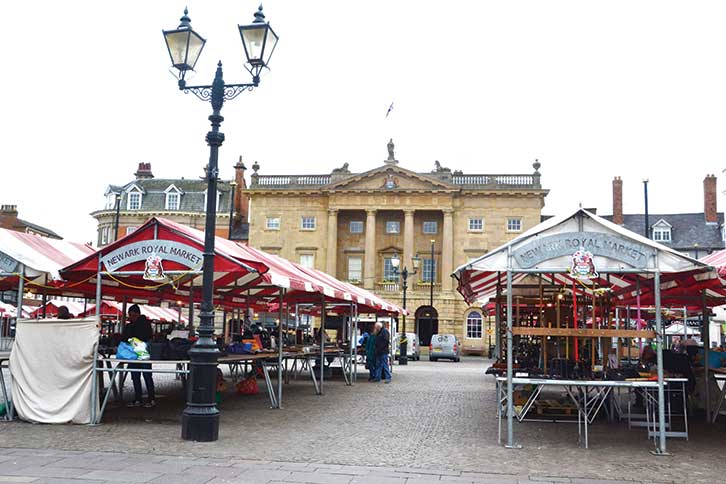
The ruined castle, built in 1123, overlooks the river, although at the time of our visit it was being extensively renovated.
Newark was a Royalist stronghold, but surrendered in 1646, when the castle and other structures were destroyed. We loved the unusual buildings lining the market square. Dominating everything, however, is the Church of St Mary Magdalene, with its impressive tower and spire.
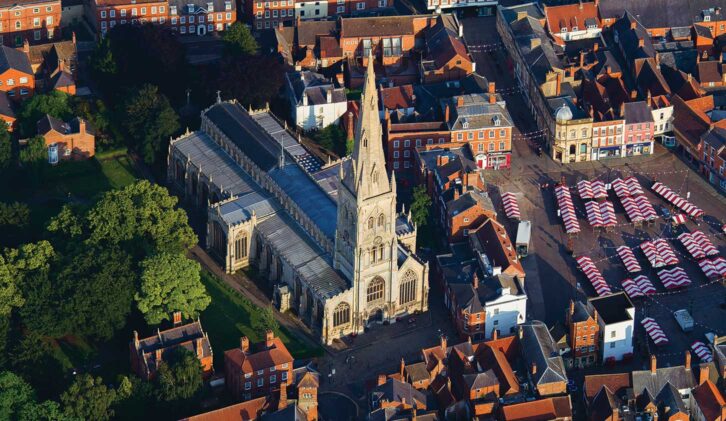
Our thirst for facts had certainly been quenched on this entertaining holiday, and here’s to the next one!
Are you looking for more touring inspiration? Then find out how Nigel Hutson got on when he explored Calderdale, a beautiful part of the world with plenty to see. Alternatively, take in the wonders of the night sky by going stargazing at Kielder Forest or see how Sue Taylor got on when she set off to discover the delights of Suffolk.
You may also like:
- The Caravan and Motorhome Club confirms it was the target of a cyber security incident
- We’ve just spotted a £50 saving on the award-winning Garmin Camper 795
Planning a tour to Nottingham
Way to go
From our home in Lancashire, we took the M65 to J8, then the A56 to join the M66. At J4 of the M66, we took the M62 until J33, where we took the A1 to the campsite.
Our outfit
We tow our 2017 Knaus Starclass 560 with our 2017 Volvo XC60 AWD.
Where we stayed
Milestone Caravan Park
Address: Great North Road, Cromwell, Newark NG23 6JE, 01636 821 244, milestonepark.co.uk
- Open: All year
- Pitches: 120
- Price: £26.40-£37.40
Very helpful reception. Pitches are generous, and washroom facilities spotless. The campsite is lush, with lots of plants and greenery, two well-stocked fishing lakes and good walking, including an onsite dog-walk.
Find out more
Lead image: Getty Images
If you’ve enjoyed reading this article, why not get the latest news, reviews and features delivered direct to your door or inbox every month. Take advantage of our brilliant Practical Caravan magazine SUBSCRIBERS’ OFFER and SIGN UP TO OUR NEWSLETTER for regular weekly updates on all things caravan related.
